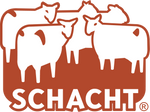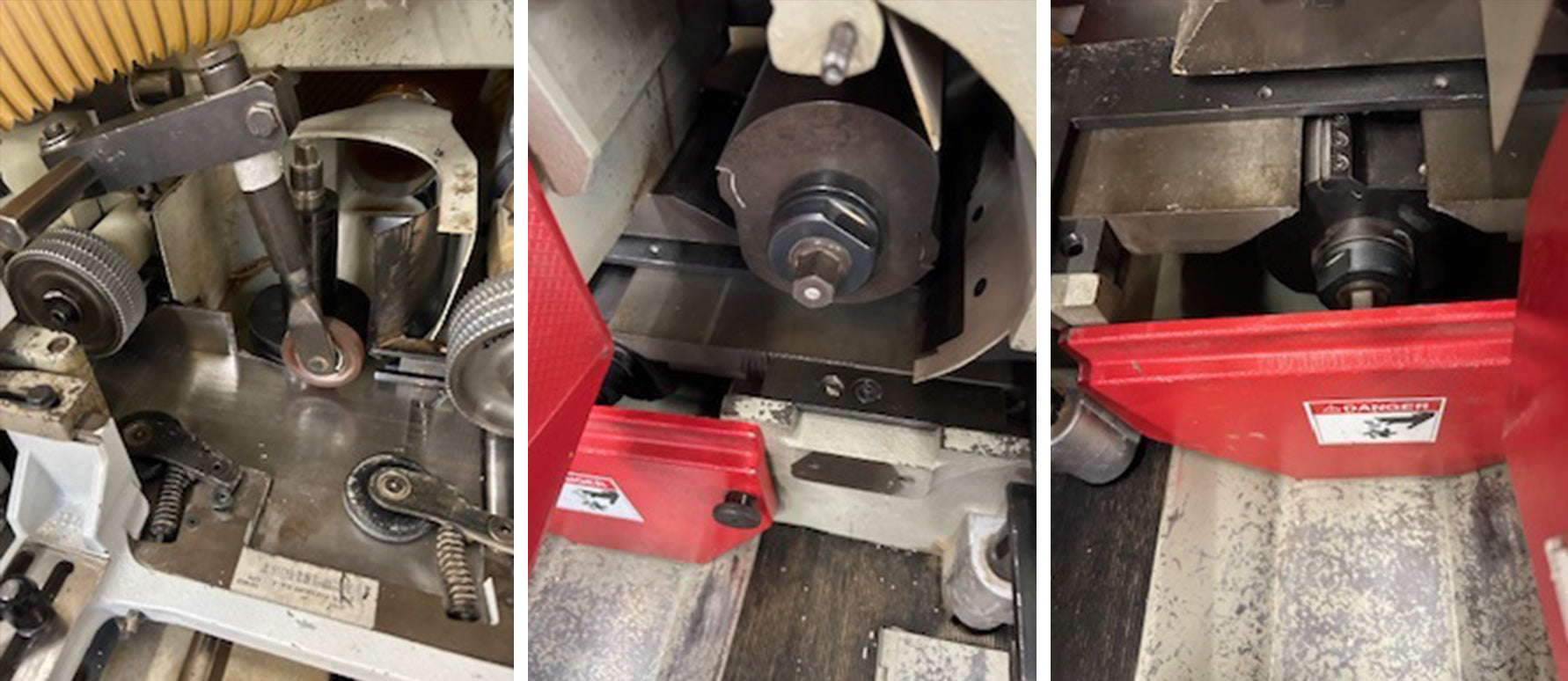By Cindy Lair
Welcome to the second step in the process of making a part, as we continue to think about what it takes to manufacture a spinning wheel or loom. After ripping, we start to move through the moulding and cut off stages of production. This step is really the most critical moment for the wood.

Our ripped wood is sitting on carts ready to be moulded. Ready means the wood is ripped to within one quarter inch of the finished dimension. Remember from my first article, that we process anywhere from several hundred board feet to several thousand board feet at a time. Once the boards are finished, we refer to them in lineal footage.
A moulder is a finishing machine. Schacht’s moulder has five sequenced heads with an automatic feed. As the wood progresses through the moulder there are pressure pads holding the wood into position. The first cutter has a raised edge where it takes a scribe cut; squaring the right edge surface to the machine and infeed table. Concurrently, the bottom surface of the board is removed with a large horizontal knife, taking a preliminary eighth inch off. The next two heads, the right and left side heads, are vertical. This removes the surface from the edges. This is where the boards receive eased or straight edges, determined by the intended function of the wood. This allows us to automatically set the kind of edges we require. “EE” Eased edges can be a number of sizes, ours are an eighth of an inch on each ninety-degree corner. “S4S” is surfaced four sides, this leaves a very sharp corner. We can also do a combination of both eased and straight edges. The last two knives of the moulder are horizontal straight knives, on the top and bottom surface of the board which finish the board to the correct thickness.

This process may seem extraordinarily simple, however with hard maple it is extremely complicated to get the surface finish we desire. The knives must be sharpened with a certain degree of hook (angle at which the blade hits the surface of the wood). This hook affects how safely the material feeds. The moulder must be run at the appropriate feed speed (the rate at which the wood advances across the knives). Hard maple can have multiple grain directions, swirling in an exceedingly small space. This means it can be extremely difficult to get a surface finish without checking (splits and cracks due to shrinkage), or chatter, (little pits close together); these indicate a failure to stop vibration in the knife or wood. If everything is correct, a moulder will produce a near glossy, glass-like surface on hard maple. From here, our cart of wood proceeds to the cut-off saw, another critical point in the manufacturing process.
About the Author: Cindy Lair knows about all our products and how we make them. In this series, she shares her woodworking knowledge of what it takes to shape a piece of wood into a part for a product.

